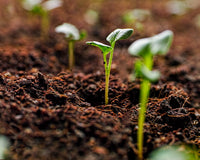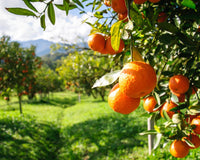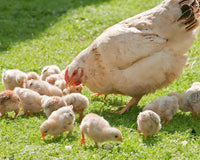Powdery mildew is the most common and widespread plant fungal disease. A white or sometimes greyish white fuzz, the disease appears in gardens and farms, infecting a variety of plants. Many common ornamental garden plants are affected including apples, crucifers, cucumbers, grapes, grasses, peas, and roses. Powdery mildew erodes the yield and quality of flowers and fruit. But it doesn’t have to be an intimidating hazard to your garden. Today we’ll explore what powdery mildew is and how to treat and prevent it.

Identifying Powdery Mildew
Powdery mildew can be identified by spots or patches of a white to grayish color powder on young plants. The initial stage of infection usually starts from the lower leaves. Here, small light green to light yellow spots will appear on the leaves. Powdery mildew then spends over the plant and growing to large yellow-brown lesions on plant tissues. Mildew spores form a layer across the upper side of leaves, looking like a white dusty coating. This is usually when gardeners notice the problem. Older leaves are usually more susceptible and fungal spores will infect them first.
Powdery Mildew Causes

Powdery mildew spores drift into your garden with the wind. Under certain conditions, spores can spread very rapidly. The disease is at its most severe in warm temperatures around 59 - 80.6° F and dry climates. Pathogen spores do not require high relative humidity to spread and germinate. Instead, it tends to affect plants in shady areas more than those in direct sun.
Powdery Mildew Treatment
To treat powdery mildew in your garden, removing and destroying all the infected plant would be the ideal solution, sadly it is not always that easy. Many try to cut off and remove the portions of plants that have powdery mildew; however, spores still are highly likely to spread and take over gardens and farms.
If your garden is expressing severe powdery mildew chemical fungicides are an option; however, chemical fungicides have their shortcomings as frequent use can cause chemical resistance. Additionally, too much chemical fungicide is harmful to both agriculture environments and human health. Though less known, there are protectant and non-toxic alternative methods to control powdery mildew.

Safe and Effective Alternatives
Sulfur and lime-sulfur are the most common fungicides for controlling Powdery Mildew. Sulfur and lime are natural minerals with powder and liquid options to choose from. Apply them before symptoms appear as a form of prevention before your plants become symptomatic. Do not apply sulfur with oils-based pesticides and avoid application to plants when the temperature is over 90° F or on plants that suffer from water stress.
Another option is applying beneficial microorganisms to soil and plants. The beneficial microorganisms can control pathogenic fungal or bacterial infection in plant. Common microorganisms can be used to control powdery mildew including Bacillus subtilis, Trichoderma harzianum, and Streptomyces lydicus. They are applied as a biological control in an organic agriculture.
Plant oils and essential oils have been a popular topic in agriculture as an alternative application for tackling powdery mildew. Essential oils such as clove oil, cinnamon oil, tea tree oil, and eucalyptus oil are commonly applied to get rid of Powdery Mildew. These essential oils have anti-fungi properties, which can inhibit fungal spores and decrease Powdery Mildew disease in both incidences and severity. These essential oils are utilized to treat botanical fungicides for controlling powdery mildew in our best seller Mildew Cure.






